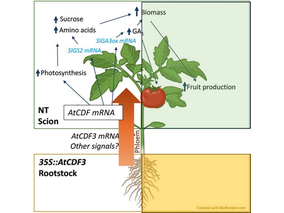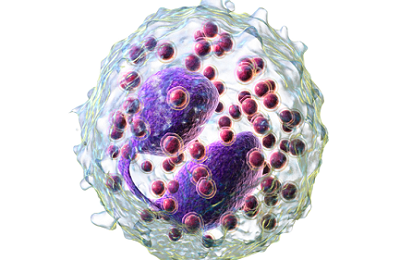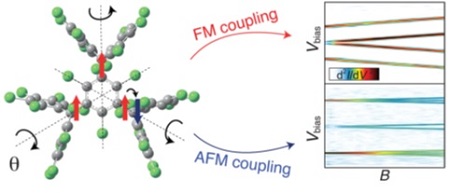R. Gaudenzi, E. Burzurí, D. Reta, de P. R. Moreira, S. T. Bromley, C. Rovira, J. Veciana, and H. S. J. van der Zant; Nano Lett. 2016, 16, 2066−2071
The magnetic properties of a nanoscale system are inextricably linked to its local environment. In adatoms on surfaces and inorganic layered structures, the exchange interactions result from the relative lattice positions, layer thicknesses, and other environmental parameters. Here, we report on a sample-dependent sign inversion of the magnetic exchange coupling between the three unpaired spins of an organic triradical molecule embedded in a three-terminal device. This ferro-to-antiferromagnetic transition is due to structural distortions and results in a high-to-low spin groundstate change in a molecule traditionally considered to be a robust high-spin quartet. Moreover, the flexibility of the molecule yields an in situ electric tunability of the exchange coupling via the gate electrode. These findings open a route to the controlled reversal of the magnetic states in organic molecule-based nanodevices by mechanical means, electrical gating, or chemical tailoring.

El gen AtCDF3 promueve una mayor producción de az...

Un estudio con datos de los últimos 35 años, ind...

Un equipo de investigadores de la Universidad Juli...

En nuestro post hablamos sobre este interesante tipo de célula del si...

Palobiofarma S.L. se complace en anunciar la finalización del tratami...
Portal de biotecnología en España
¡Suscríbase a nuestro newsletter para estar al día con las últimas noticias y ofertas!
2013 © Biotech-Spain.com - Site Developments SL. Todos los derechos reservados. Terminos y Condiciones | Política de Privacidad
Articles
Directory
